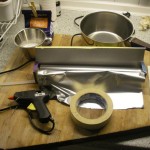Circulating tumor cells (CTCs) are a rare type of cancer cell that are found in the blood stream of patients with localized tumors. Successful separation of CTCs from blood could serve as a liquid biopsy to help diagnose cancer and monitor treatment progress. A deeper understanding of CTCs could also lead to a better understanding of the most deadly cancer process: metastasis, where cancer cells leave established tumors and migrate to other locations in the body. Currently, CTC separation methods rely on features that distinguish CTCs from other cells—antibodies that stick to them, cell size, deformability, or even electrical properties. Scientists have also explored using sound waves to separate CTCs. Acoustic-based separation provides excellent biocompatibility and safety; it preserves the viability, function, phenotype, and genotype of cells. It also allow cells to be separated without modification. As a result, sound-based separation methods enable CTCs to be maintained in their native state throughout the separation process while avoiding invasive biopsies. Unfortunately, previous sound-based separations technologies haven’t managed to separate CTCs from clinical samples due to insufficient throughput and long-term operational instability. Recently, a team of scientists has developed an acoustic-based microfluidic device that separates CTCs from peripheral blood samples of cancer patients in a high-throughput manner. This method relies on something called tilted-angle standing surface sound waves. These standing waves contain points that “stand still,” called nodes, around which the wave oscillates. Read 7 remaining paragraphs | Comments
See more here:
Sound waves separate rare cancer cells from blood






